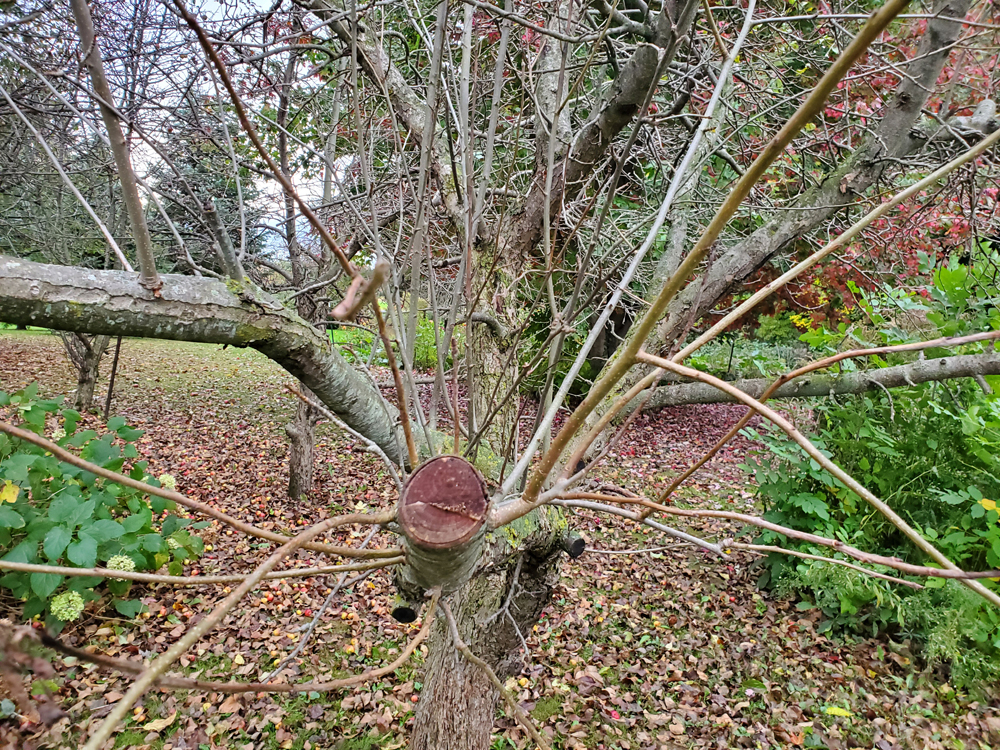Water sprouts and suckers

Many trees form suckers and water sprouts. Suckers are vigorous upright growth at the base of a tree or from the root system. Water sprouts are upright shoots which grow from the trunk or branches. Suckers and water sprouts are potentially problematic because they can reduce flowering and fruiting, alter the form of the tree, and harbor pests and diseases. They are not attractive, and also make trees more susceptible to wind and ice damage.
Some trees are more susceptible to forming suckers and water sprouts, including crabapples, most fruit trees, maples, hawthorn, linden, black locust and dogwood.
The University of New Hampshire Extension says water sprouts can form because of stress or injury from things like storm damage, root loss, soil compaction, topping, disease, over-pruning or drought. Removing them without addressing the underlying issue will typically result in them growing back. If you have a tree with many water sprouts, UNH notes it is best to leave some because sprouts can help a tree rebuild energy reserves. UNH advises to thin water sprouts so that they are spaced apart and grow away from the trunk and permanent branches. You can also shorten water sprouts to keep them from getting too long, as this slows their growth and regeneration.
Suckers can also be a sign of stress in a tree. If allowed to grow, suckers can form multiple trunks or grow into the lower parts of a tree. If you have a grafted tree, suckers can be a symptom of partial incompatibility between the rootstock and the scion – the lower part of the tree. Suckers growing from below the graft union typically have a very different appearance and may outgrow the desired variety. Suckers can also be the result of an injury to the base of the tree trunk from lawn mowers and string trimmers, or from significant injury to the crown of the tree.
UNH says that suckers should be removed as soon as they appear. Once they begin to develop, they likely will continue to be an issue for the rest of the life of the tree and will need to be removed regularly. If they are in the lawn, they can be managed with a lawn mower. If they are growing at the base of the tree trunk or in a landscape bed, suckers will have to be removed by hand. Cut them back to the point where they emerge from a root or stem – you may have to dig to remove suckers arising from roots.
Do not use herbicides to suppress suckers on ornamental plants as the parent plant can be harmed. UNH and Iowa State Extension both say products available that claim to prevent suckers from growing have little research-backed information regarding their effectiveness. Trees that form suckers will always have suckers, Iowa State adds. Pruning suckers at the base of a tree as soon as they appear should be regarded as regular maintenance to keep the tree healthy.





